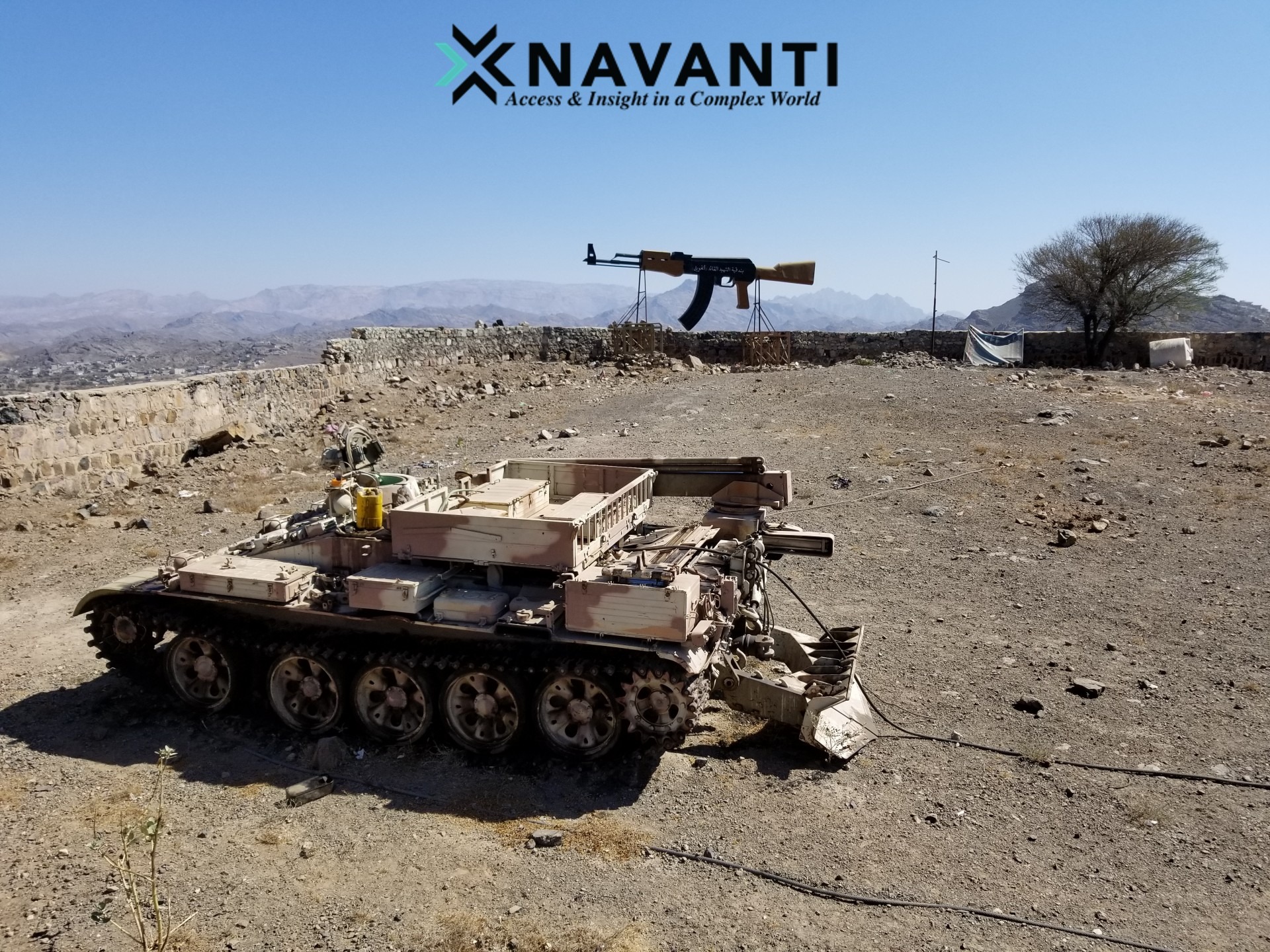Navanti News Bulletin: Yemen 2024 Forecast

Navanti News Bulletin: Yemen 2024 Forecast
Navanti News presents a thought-provoking 2024 forecast for Yemen, aiming to stimulate critical thinking and emphasize long-term perspectives. The bulletin outlines the most challenging scenarios facing policy makers in regards to Yemen during 2024.
Living Conditions Under Strain:
Yemen is anticipated to encounter significant hurdles in the near future as Ansar Allah (Houthis) employ military tactics to limit fuel exports in the Internationally Recognized Government (IRG) governorates of Shabwah and Hadramawt. The repercussions are expected to manifest in a contracting economy, persistent inflationary pressures, and liquidity crises. These challenges will unfold against a backdrop of diminishing foreign investment and aid, coupled with the impact of sanctions on remittances.
Houthi Port Engagement:
There is the potential for repercussions if Western commercial and shipping corporations along with aid organizations avoid Houthi-controlled ports of Hudaydah and Saleef, which may encourage the Houthis to seek new trading and shipping partners from allies in the Axis of Resistance, particularly in Iraq, plus China, Russia, and Iran.
Peace Roadmap Challenges:
The likelihood of the international community endorsing a UN-backed peace roadmap appears slim as long as the Houthis persist in their attacks on commercial vessels in the Arabian and Red Sea. This is anticipated to hinder the current endeavors of UN and US envoys in reviving peace talks and concluding a ceasefire agreement.
Saudi Talks with Houthis:
Anticipated talks between Riyadh and the Houthis may lead to a memorandum of understanding outside the auspices of the UN-led peace process, but challenges lie in on-the-ground implementation.
Pressure on Arab Gulf States:
Oman and possibly Kuwait, Qatar, and Saudi may face diplomatic pressure from the US and UK to prevent Houthi attacks on their assets. Washington and London may use these channels to warn the Iran-backed Yemen-based group of potential repercussions if significant harm is inflicted on American and British personnel.
Echoes of Past Retaliation:
A scenario resembling January 8, 2020, is anticipated, with potential Houthi attacks mirroring Iran’s retaliation for the killing of Quds Force commander Qasem Soleimani – i.e. no U.S. fatalities but damaging assets.
Houthi Actions Post-Gaza:
The potential conclusion of military operations in Gaza by the Israeli Defense Force (IDF) might lead the Axis of Resistance, including the Houthis, to discontinue attacks on ships associated with or heading for Israel in both the Arabian and Red Sea. However, it is improbable that the Houthi will likely persist until they believe they have inflicted significant harm or damage to US-UK assets in retaliation for their fallen fighters.
Political Faction Alignments:
Factions within the Joint Meeting Parties (JMP), an alliance of opposition political parties in Yemen, may join forces with the Houthis. They are likely to cite nationalistic motives to counter perceived “foreign” aggression from the US and UK as well as Israel’s military operations in Gaza.
Coalition Funding Reduction:
The Saudi-led coalition is expected to reduce payments to local allied groups in Yemen, likely prompting Islamist-ultra conversative Salafi fighters to self-reorganize for “jihad” against the Houthis. This could fuel a possible sectarian war.
Renewed Clashes Anticipated:
Expect renewed clashes between Houthi forces and the IRG Brigadier General Tarik Saleh-led Guardians of the Republic, National Resistance, and Tihama Resistance in the Hudaydah regions of Al Fazah, Tuhayta, Zabid, and Al Jarrahi.
Risk of IRG Disintegration:
The Yemen UNSC panel of experts warns of a potential disintegration of the Presidential Leadership Council (PLC), leading to internal armed conflict.
STC Challenges:
The Southern Transitional Council (STC) faces ongoing challenges in asserting dominance in South Yemen’s political landscape. They must contend with the Hadramawt National Council and emerging hybrid groups in Mahra, Abyan, and Shabwah.
Marib Discontent:
As discontent grows and energy revenues sharply decline in Marib, salaries for the tribal resistance and Yemen National Army (NA) are likely to diminish. Without robust Saudi air support to repel the Houthis, there’s a possibility the Houthis might launch a renewed effort to seize the oil-rich region.
Houthi Cross-Border Tactics:
The Houthis may resume cross-border attacks, employing joint missile and drone strikes against the Saudis to secure financial support for reconstruction and salary payments. Additionally, these tactics would aim to exert pressure on Saudi Arabia, secure their commitment to peace with Sana’a, and halt any possible support to PLC/IRG-backed forces.
Missile and Drone Attacks:
There is the possibility of Houthi long-range attacks on US 5th Fleet Naval bases in Bahrain, Djibouti, and beyond, possibly for symbolic reasons.
Iranian-backed Governance:
There is a growing likelihood that the Houthis will become the first recognized Iranian-backed resistance group to fully control a state and govern a substantial portion of Yemen.

